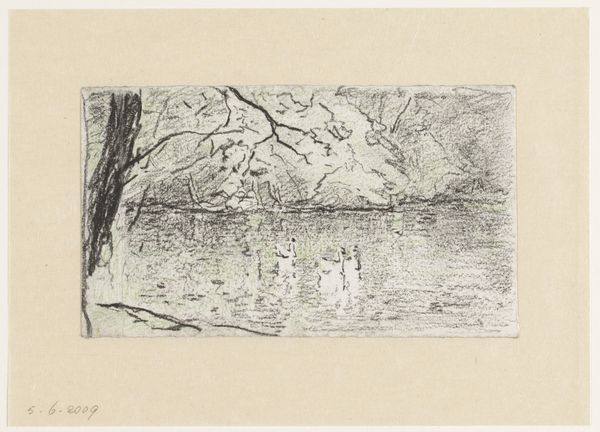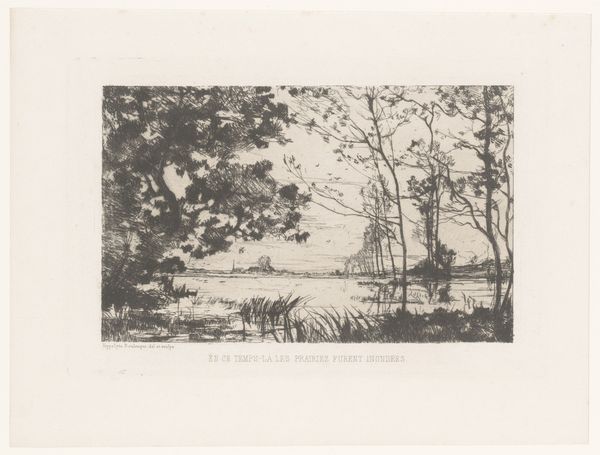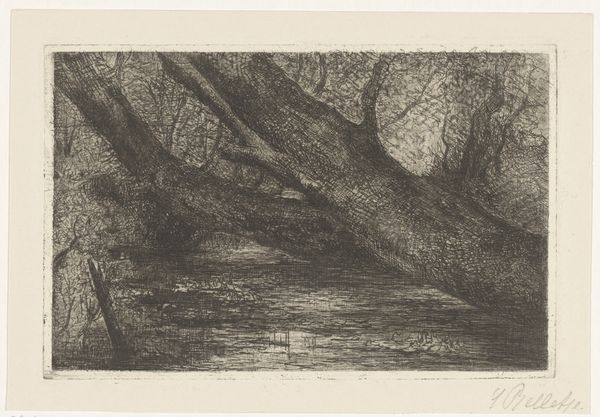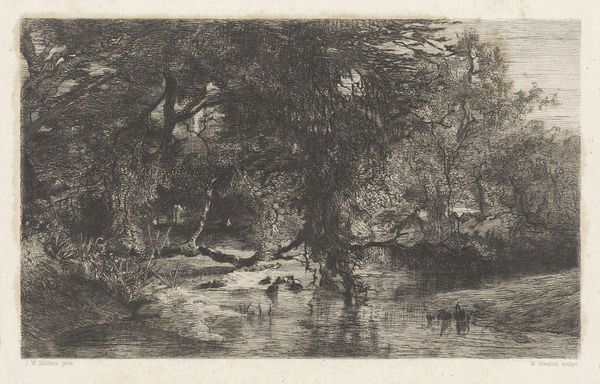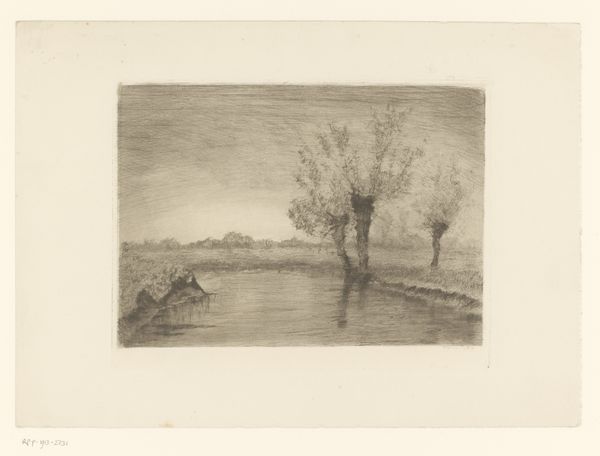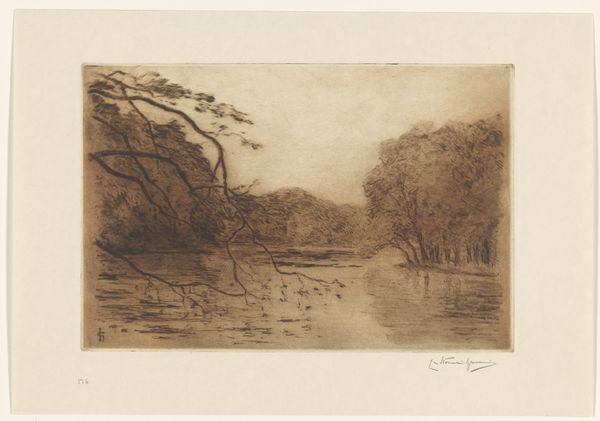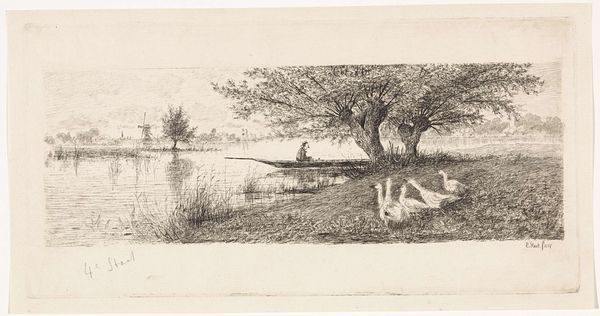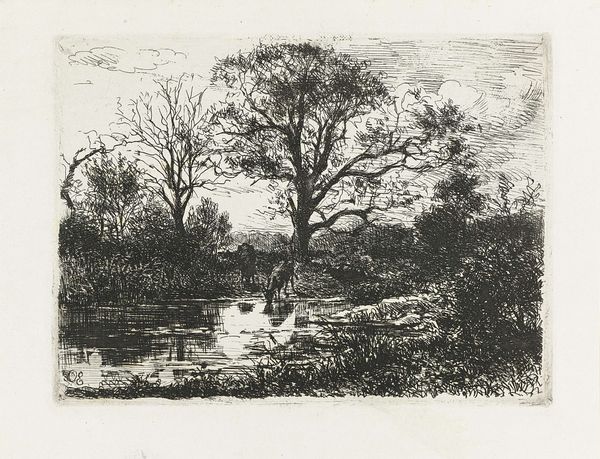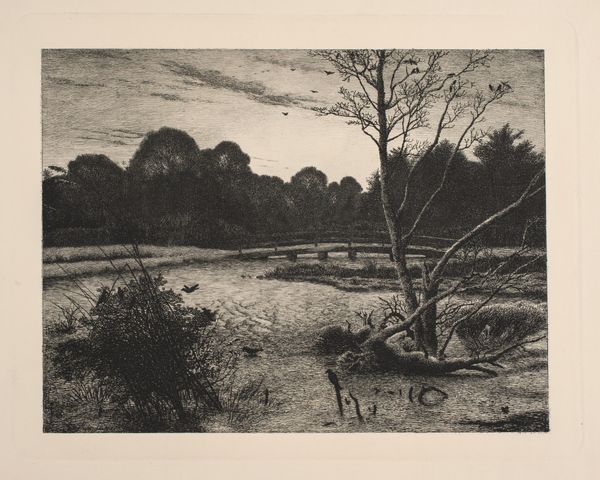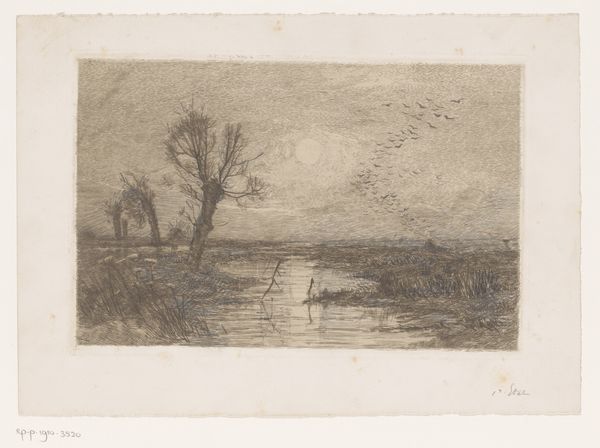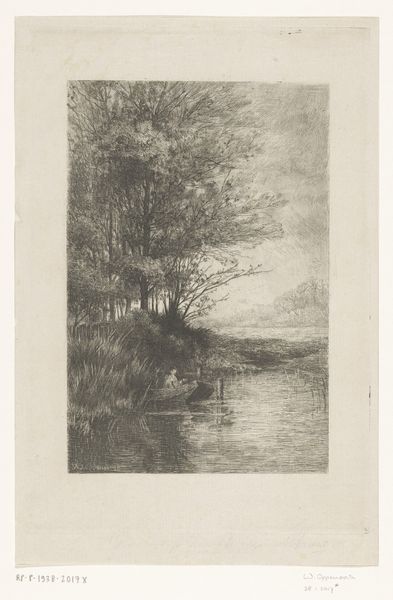
drawing, print, etching
#
tree
#
photo of handprinted image
#
drawing
# print
#
impressionism
#
etching
#
old engraving style
#
landscape
#
realism
Dimensions: height 184 mm, width 325 mm
Copyright: Rijks Museum: Open Domain
Curator: Let's dive in. Editor: Here we have Adolphe Appian’s "Ducks in a Pond at the Edge of a Forest," created in 1883. It looks to be an etching. The detail is remarkable and has such a quiet, almost melancholic mood. What strikes you most about it? Curator: The etching process itself is quite telling. Notice the dense network of lines used to create depth and shadow. Appian wasn't just depicting a scene, he was actively engaging with the material. How do you think the limitations - and affordances - of etching shaped the final image? Consider the social context: printing like this enabled wider access to art, breaking down traditional hierarchies of display in salons, which were elitist affairs. Editor: That makes me consider how much labor went into creating the printing plate itself, especially to achieve this level of detail. Curator: Precisely. Etching required skill and time, reflecting a certain type of labor now often absent in our digitally reproduced images. Appian’s artistic hand is evident in the manipulation of the medium. He chose to represent nature with materials that themselves come from the earth: metal, acid, paper. It's a complex interplay. The etching lines aren't just descriptive; they carry meaning. Editor: So, you're saying the process itself—the materials and the labor involved—are key to understanding the piece’s artistic value. What is its relation to other etchings of that period? Curator: Consider other landscape etchings from this period. You would find similar interest in material process and democratized means of distribution, while others leaned toward grand historical narratives, and the process was considered of less artistic value. What does Appian's choice of subject matter, combined with his meticulous technique, suggest about his relationship to these traditions? Editor: I see that now. The act of creating this etching as much part of its meaning as the ducks in the pond. I might have looked over it if it weren't pointed out. Thanks for shedding some light! Curator: Anytime. It is interesting how revisiting art from this perspective changes how one engages with it.
Comments
No comments
Be the first to comment and join the conversation on the ultimate creative platform.
